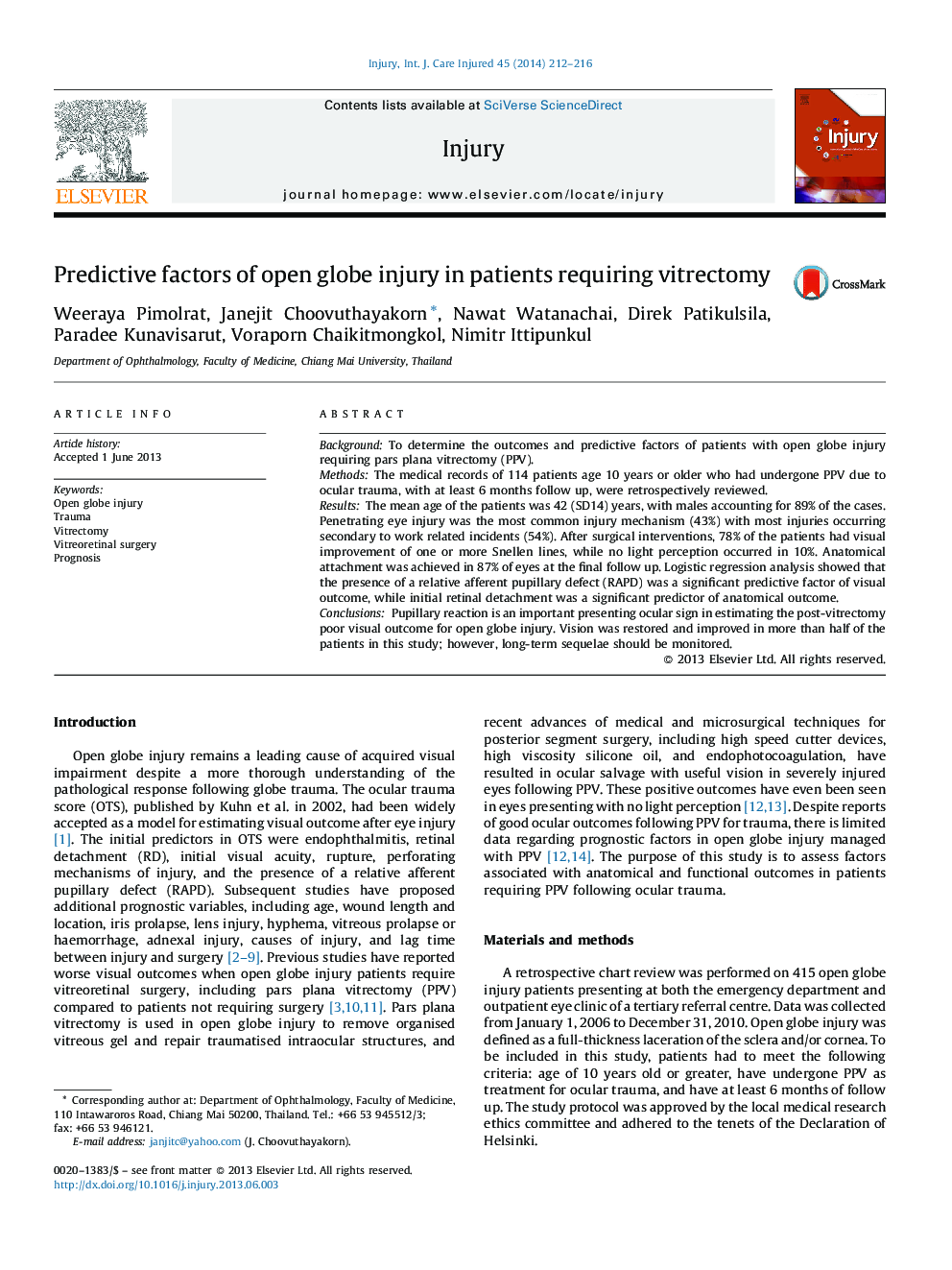| Article ID | Journal | Published Year | Pages | File Type |
|---|---|---|---|---|
| 3239824 | Injury | 2014 | 5 Pages |
BackgroundTo determine the outcomes and predictive factors of patients with open globe injury requiring pars plana vitrectomy (PPV).MethodsThe medical records of 114 patients age 10 years or older who had undergone PPV due to ocular trauma, with at least 6 months follow up, were retrospectively reviewed.ResultsThe mean age of the patients was 42 (SD14) years, with males accounting for 89% of the cases. Penetrating eye injury was the most common injury mechanism (43%) with most injuries occurring secondary to work related incidents (54%). After surgical interventions, 78% of the patients had visual improvement of one or more Snellen lines, while no light perception occurred in 10%. Anatomical attachment was achieved in 87% of eyes at the final follow up. Logistic regression analysis showed that the presence of a relative afferent pupillary defect (RAPD) was a significant predictive factor of visual outcome, while initial retinal detachment was a significant predictor of anatomical outcome.ConclusionsPupillary reaction is an important presenting ocular sign in estimating the post-vitrectomy poor visual outcome for open globe injury. Vision was restored and improved in more than half of the patients in this study; however, long-term sequelae should be monitored.
